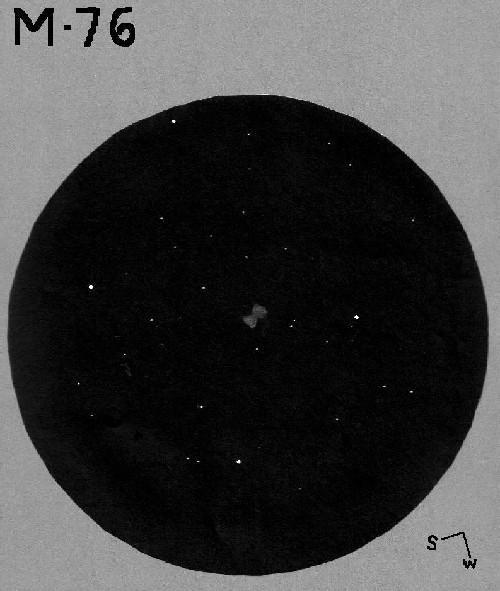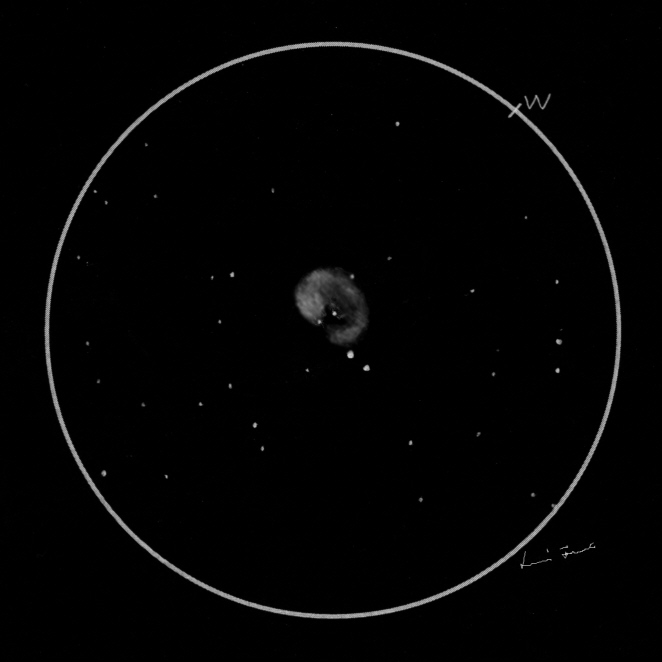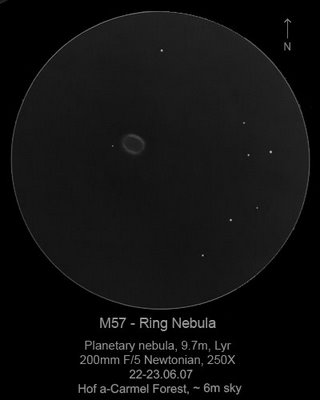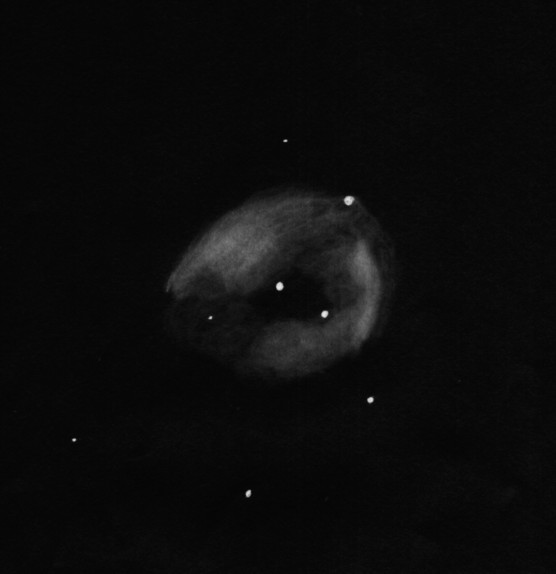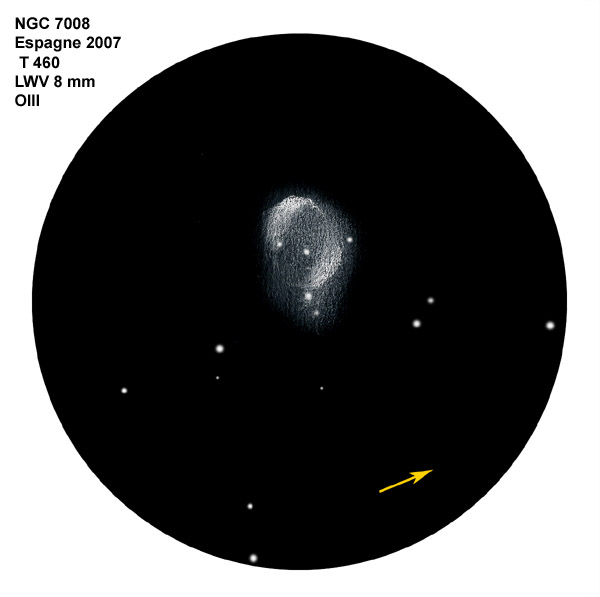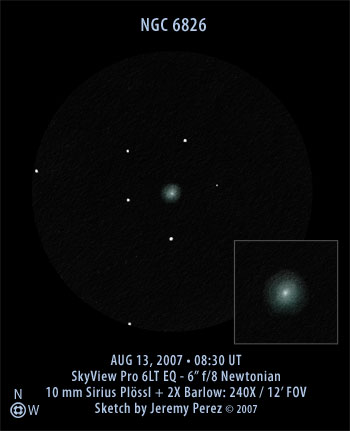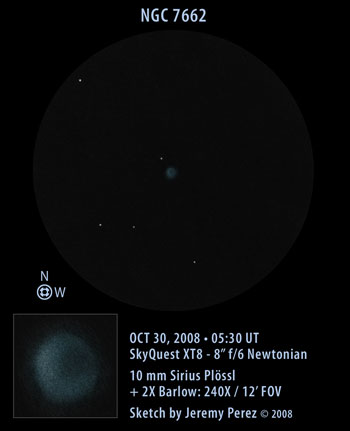
NGC 7662, The “Blue Snowball”
Sketch and Details by Jeremy Perez
Observation Notes:
The ‘Blue Snowball’ nebula didn’t disappoint, and shone with a subtle cyan-green color when I aimed the Dob at it. It was elongated roughly north-south and had an uneven appearance. The main shell was shaped like a soft, round-edged pentagon. The east side was brightest, while the northwest side opened up to allow a darker intrusion into the nebula’s core. This brighter shell appeared to be surrounded by a slim, subtle halo. Although I could not see the central star, another neighboring star paired itself with the snowball, about 1 arc minute to the northeast. The nebula itself appeared to be about 30 arc seconds in diameter.
Object Information:
NGC 7662 was discovered by Friedrich Wilhelm Herschel in 1784. It is also cataloged as: PK106-17.1, H IV-18, h 2241, GC 4964, PN G106.5-17.6
Subject NGC 7662
Classification* Planetary Nebula (4(3))
Position* Andromeda [RA: 23:25:53.93 / Dec: +42:32:06.1]
Size* 32″ x 28″
Brightness* 8.3 vMag (9.2 bMag)
Date/Time OCT 29, 2008 – 10:30 PM MST (OCT 30, 2008 – 5:30 UT)
Observing Loc. Flagstaff, Arizona, USA – Home
Instrument Orion SkyQuest XT8 (203 mm dia./1200 mm F/L)
Eyepieces/Mag. 10 mm Sirius Plössl (120X) + 2X Barlow (240X)
Conditions Clear, calm
Seeing 5/10 Pickering
Transparency ~ Mag 6.5 NELM
*References NGCIC.org


